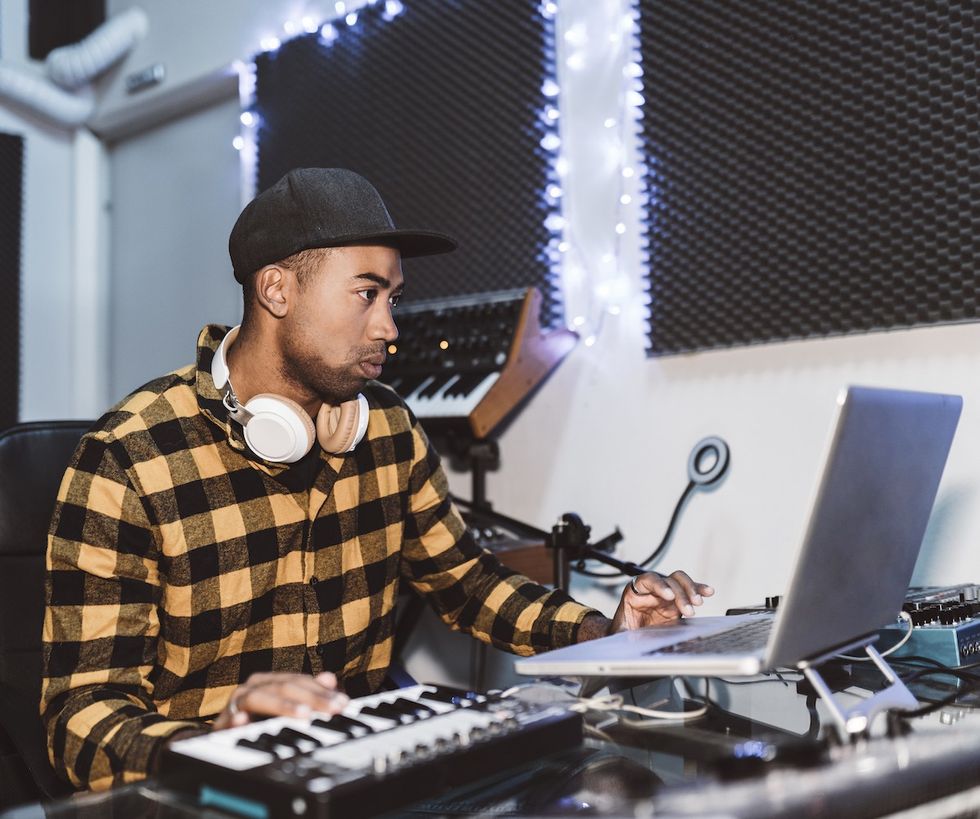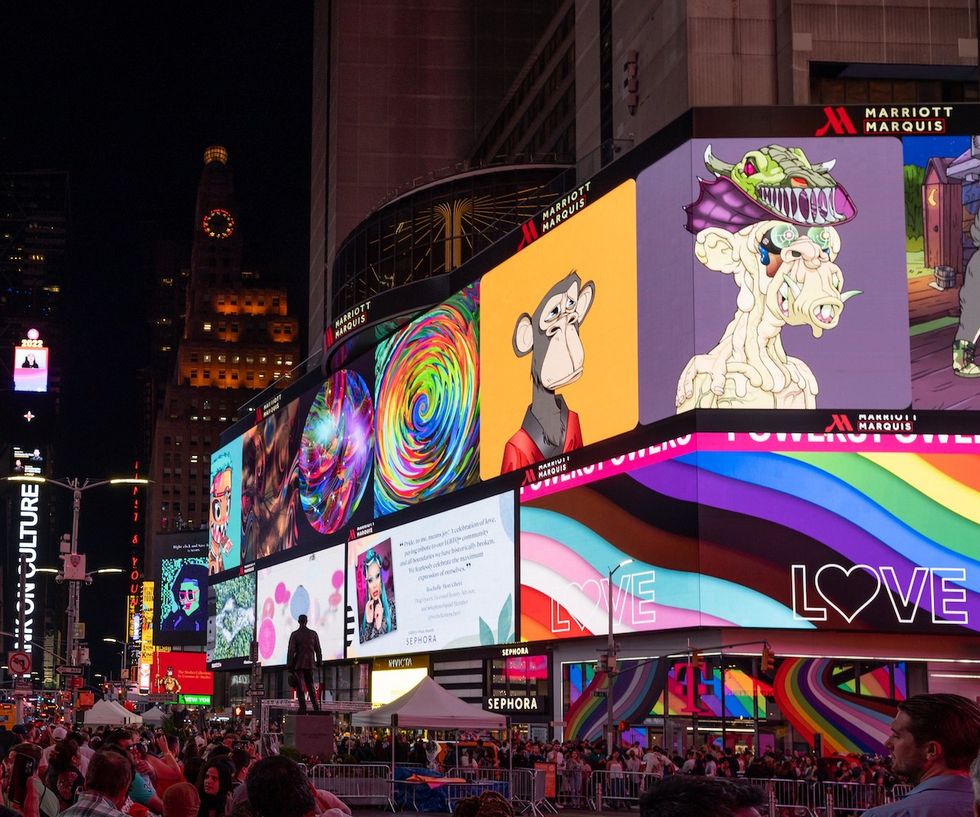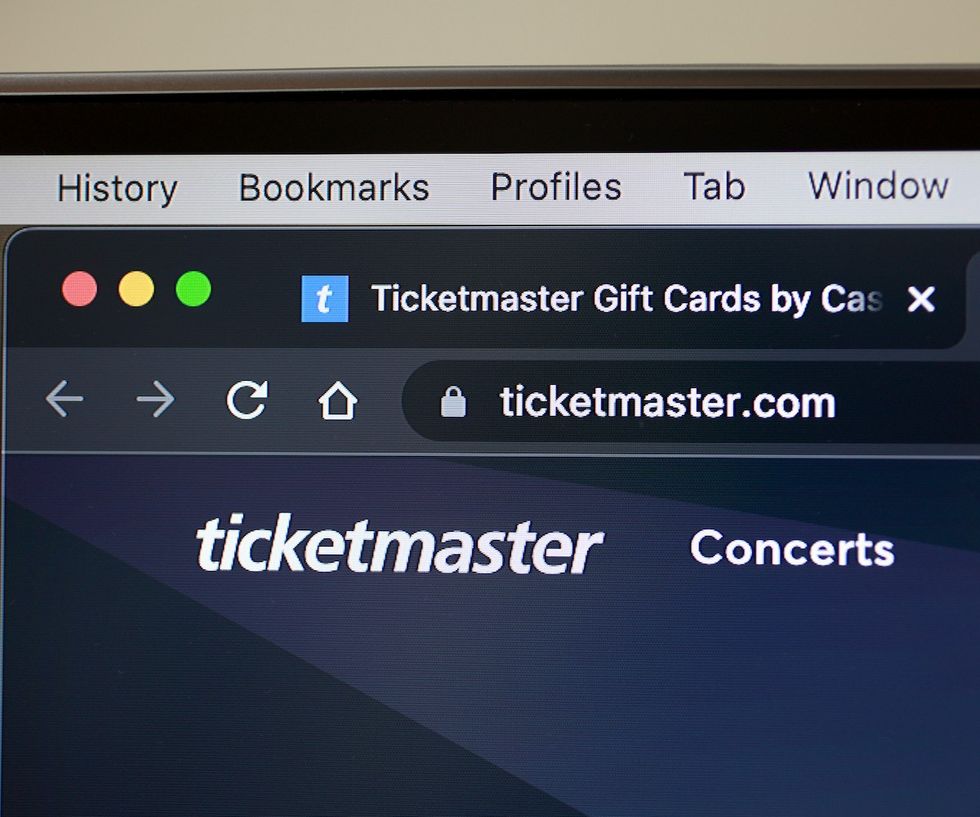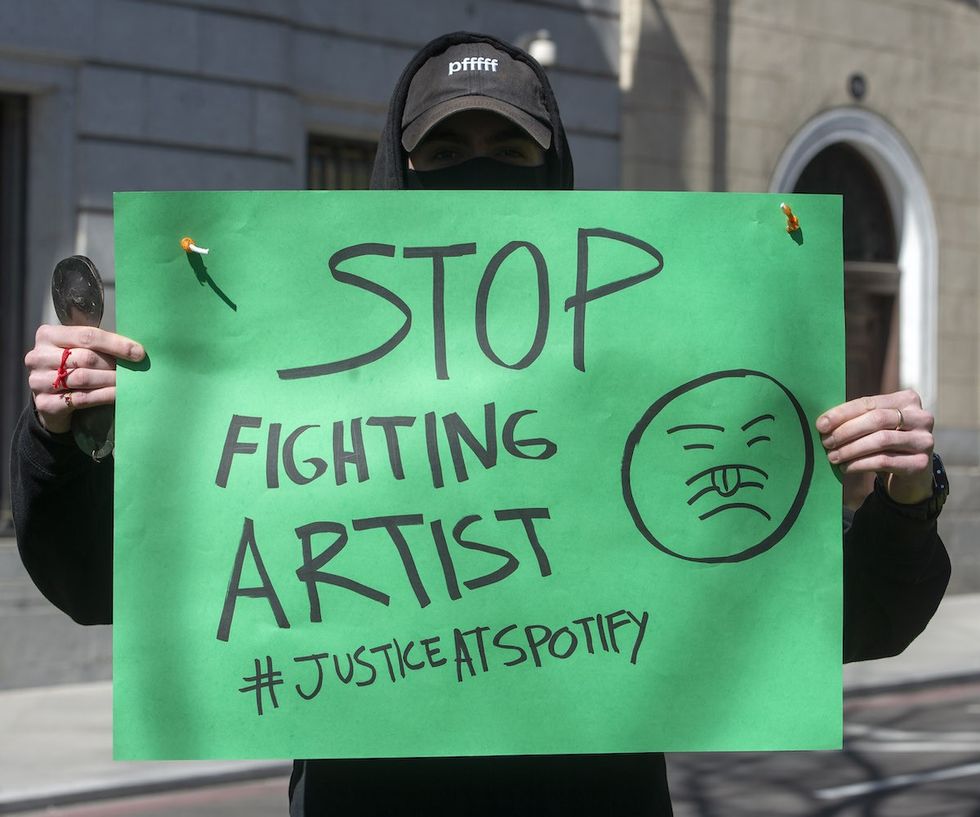-
 play_arrow
play_arrow
DisnDat HITZ DisnDat HITZ
-
play_arrow
Warlando Hitz Warlando Hitz
-
 play_arrow
play_arrow
DisnDat Tunez Reggae,Dancehall and Afro Beats
Music – 10 hours ago

The industry is changing, and change means new opportunities. To find out how those opportunities and pitfalls might play out in the new year, we gathered some expert predictions for the music industry in 2023.
The consumer is changing. Despite the doom and gloom rumors of a recession, fans are willing to invest in a small number of artists if they feel a sense of community. However, building community for indie artists isn’t a given.
Social media tools like TikTok are promising avenues to reach consumers. But tech companies are volatile and act in self-interest. Web3 holds some promise for helping artists amplify and understand their connection to fans, but it needs to get more consumer-friendly to impact the industry on broader terms. The kind of fans who will buy the physical album or the NFT are created by the communal experience of live shows, but touring for small acts is more of an investment than a windfall.
Even if artists manage to break through and smartly use the tools available to them, outside factors risk limiting their scope. Monopolies over the live entertainment industry choke out both the consumers’ budget and the creators’ leverage. Traditional streaming platforms show no willingness to become more lucrative for music makers. But, artists are eager to continue organizing for better working conditions.
On an optimistic note, even if economic outlooks sour, music itself remains recession-proof. So much so that private equity firms are actually spending billions of dollars on purchasing the publishing rights of musical artists as they project it to be a recession-safe investment.
The industry is changing, and change means new opportunities. To find out how those opportunities and pitfalls might play out in the new year, Okayplayer gathered some expert predictions for the music industry in 2023.
1. More artists will embrace a DYI spirit

Photo Credit: Getty
The age of digital media has brought an influx of tools and information to independent artists that were once firmly locked behind the gate of major labels. It no longer takes massive budgets and closely-guarded connections to promote a project and grow a fanbase.
“There are so many people that are like, ‘you need to stay on this one particular track,’ but that track never existed,” Michael “Sto” Stover, an artist development specialist and marketing consultant, told Okayplayer over a video interview. “There’s an unlimited amount of ways to get in front of your audience and actually build a fanbase.”
In 2022, indie artists increasingly made use of forum-type platforms to connect with fans beyond the more static social media post. Artists created groups on the chatting app Discord or shared conversations on Twitter Spaces and Instagram Live. They further utilized the streaming infrastructure of Twitch to collaborate with fans in real-time.
“Knxwledge is the perfect example of someone on Twitch who’s just making beats and getting their audience involved, and then selling the music because they’re so involved they want to buy it,” Sto said. “That fan-to-artist engagement, interaction, is really where things are going to go for the next three to five years.”
The average consumer’s annual spending on music actually rose five percent in 2021 to $98. Where just a decade ago, the proliferation of free music downloads facilitated a “why would I pay for music” attitude, the increase in spending today is boosted significantly by sales of physical media like CDs and vinyl that are supplementary to the ability for the consumer to stream the recordings at a fraction of the cost.
“It’s difficult to create music on that streaming income and some artists have taken the time to explain that to their fans,” Sto said.
Though hip-hop’s charting dominance slipped somewhat in the last year, its still firm majority of the music economy may suggest that consumers’ willingness to spend on the artists they feel connected to could be flattening the curve of that share’s distribution to hip-hop artists in particular.
“Artists are starting to realize they’re the prize. I think the music industry as a whole is starting to see that too and are trying to kind of cut that off,” Sto said. “But artists are starting to realize, ‘the labels aren’t going to help me anyways so let me do it myself. It may take longer but at least it’s mine.’”
2. Creatives will crack the TikTok code
@theepurpleroom Lay Bankz performed her brand new song Wow on thee Purple Room! Tune in at the link in our bio now! Thee Purple Room is brought to you by Amethyst Collab. We are produced and filmed at Bask Studios in Brooklyn, NY #theepurpleroom #drill #phillyclub #club #rnbvibes
When it comes to music marketing, one social media app dominated the conversation in 2022. In a post-horses-in-the-back-world, the average daily number of videos watched on TikTok has surpassed a billion a day. Up to 75 percent of its users say they discover new artists on the platform.
“Fans are more eager than ever to discover something first. But they need to have some type of co-sign,” Olivia Shalhoup, CEO of the digital marketing agency Amethyst Collab, said over a video interview. Shalhoup has perfected the consistent generation of the kind of engagement that labels are clamoring for. Her latest endeavor, a COLORS SHOW-esque space called Thee Purple Room, has combined authentic taste-maker curation with directed artist discovery.
“For example, Lay Bankz had a performance go live in Thee Purple Room and all the comments are like, ‘oh I’ve been watching her, I’ve been waiting for her, we love her,’ and that’s because we’re really tapped into the underground,” Shalhoup said. “You can’t pay me to be on Thee Purple Room. It’s not a promotional platform right now.”
Since November, Thee Purple Room’s TikTok page has grown to nearly 200,000 followers by sharing original live performances from under-discovered artists driven by the temperature testing of Amethyst’s subgenre and vibe-specific fan pages. One of their most successful, Drill Girlies, focused on platforming women in drill music, who are typically underrepresented and under-supported.
“What’s gonna define how TikTok is marketed is how the consumers change. People hate being sold to now,” Shalhoup said. “Branding is also becoming a lot more implicit than explicit… which is a big reason why fan page marketing is more successful than artists posting on their page, because fans don’t think they’re being sold to when the content comes from a fan page.”
However, the volatile and often unannounced changes to social media platforms will require enterprising creators to stay on their toes and continue adjusting even the most successful strategies.
“The rise in ad spending on TikTok that has resulted from the loss in ad spending on Twitter has really impacted organic engagement,” Shalhoup said. “At one point, when we were running our fan pages, we used to get 10,000 to 100,000 views on every video and one day we just started getting like 300 to 500, like we couldn’t even break 1000 and I was like, ‘what is happening?’”
Shalhoup had to get in touch with an internal contact at TikTok to learn that they had shifted their algorithm to favor original content, which disrupted the repost-heavy format of Amythest’s curated fan pages. That became a driving factor for creating original content for Thee Purple Room, but such drastic changes could still come in the future and aren’t limited to TikTok.
“Tomorrow, I could figure out that TikTok no longer likes high-quality, produced content,” Shalhoup said. “Well, my whole series is that so what are we going to give consumers instead, how are we going to adapt?”
3. Web3 will not be going away

Photo Credit: Noam Galai/Getty Images
In 2021, the explosion of buying and selling digital media connected to cryptocurrency’s public ledgers, called NFTs, exploded into the popular sphere. The money and attention brought to the space quickly made it a playground for scammers, who took advantage of the general public’s poor understanding of anything crypto-related. In 2022, the boom gave way to a bit of a bust. The lowest price for an NFT from the popular Bored Ape Yacht Club collection has fallen from $408,000 to about $82,000.
Still, if the purchase of an NFT can become as simple to the consumer as to be akin to the purchase of physical media, it could become a promising tool even for artists who aren’t well-versed in the Web3 space.
“Sure the NFT space has gone through a lot of scamming and a lot of like, downside stuff, but the people who were in that community from day one are still kind of there,” Sto said. “There’s still there’s still a ton of artists doing great things over there. And building the kind of community that we were just talking about.”
NFT sales are useful for artists because it not only allows the artist to sell a piece of media — album, single, video, etc. — at a price they can set, but track exactly who is making the purchase and even make royalties from and track future sales down the line. Running with the analogy of physical media, it’s like if an artist sells a vinyl and they maintain a record of not just who purchased it, but a contract that nets them a portion of a future sale when that person trades it to someone else. The public ledger, called the blockchain, that crypto runs on makes it possible to track each sale down the line and gives the artist the ability to know and interact with the specific people who are buying and selling that record.
“We’re taking back what it means to be an independent artist,” Heno., an indie hip-hop artist using Web3, said over a video interview. He has appeared on a Snoop Dogg NFT mixtape that made $300,000 in a single day — appeared in Fortune Magazine for his contribution — and has sold more than 200 NFTs since entering the space less than two years ago.
“To date, I have like 170,000 monthly listeners… but I couldn’t pull up a Rolodex of the people playing my shit,” Heno. said. “I can, on the blockchain, in perpetuity, see who is supporting me, whether they make themselves anonymous or front facing… you want to have them deeply involved.”
In a short time, Heno. was able to quickly learn the Web3 space just by participating in topical Twitter Spaces and Clubhouse chat rooms. He went from Googling “blockchain” and watching educational YouTube videos to attending live pop-up events where he was inspired by similarly-minded creatives. Though he was able to learn the ropes quickly enough to be successful as a vendor, consumers have been slower to follow suit.
Difficulty with understanding the mechanics of cryptocurrency and blockchain creates a barrier for the average consumer’s entry into the marketplace despite NFT sales topping $17 billion in 2021. The publicity of major implosions like the estimated $1.7 billion lost from the FTX exit scam, and the environmental impact of crypto mining make consumers understandably hesitant to deal with learning the systems currently required to participate in the marketplace.
But because of the valuable data and royalties in perpetuity that even brands and companies outside of the music space can gain from having the direct-to-consumer information that NFTs provide, the industry has a lot of incentive to invest in closing the gap that makes Web3 seem so alien and inaccessible.
Now that the dust has settled a little, efforts to make crypto more consumer and environment-friendly are apparent.
New cryptocurrencies are being developed with environmental sustainability in mind and established currencies like Etherium are making efforts to reduce carbon emissions. Crypto wallets can now be attached to PayPal and Venmo, where consumers are already comfortable making purchases. Heno. says that it’s only a short time before consumers can purchase NFTs with a Visa.
“Brands that want to come into this space that know nothing about web3 are going to come to the people in web3 first,” Heno. said. “We’re gonna continue to see these crossover events and people are going to be curious to want to go to them, even if they don’t know that shit. People who are in here right now and really building are going to be the people in the next few years that you see really doing crazy shit. I think that hip-hop is going to make web3 look cool.”
4. The touring situation will get bleaker

Photo Credit: Jena Ardell
Despite being the first year of a full return to live music events, 2022 was not ideal for most performers. Notable indie acts with huge fanbases like Little Simz, Santigold and Animal Collective had to cancel entire tours because of poor financial prospects.
“The cost of everything is up to the point that artists feel that it may not be worth it, they can’t make a profit,” John Kellog, program director for the Master of Arts in Music Business for Berklee Online, said over a video interview. “I mean, everybody’s on the road. So you have a number of factors.”
Years of limited to no options for touring means that delayed tours for even old albums from major ticket-selling artists like Tame Impala are competing in the same year with tours for new albums from major ticket-selling artists like Kendrick Lamar, Bad Bunny and Taylor Swift. Not only does the consumer have a limited budget for live music events, but the inflation and glut in the market raise the price of tour busses, hotel rooms, stagehands and every other line item on the balance sheets.
“I don’t expect it to level out probably for another year or so,” Kellog said. “That glut is still going to be there because people are so interested in going to concerts that they’re going to buy the tickets.”
Leering over their mahogany desks, rubbing their fingertips together and licking their chops, providers of events and owners of the last venues left standing further choke out the small acts by driving up the cost of major tours and booking only acts that keep stadium lights on.
5. Ticketmaster antitrust case will shape the future of live music

Photo illustration: Joe Raedle/Getty Images
The 2010 merger of Live Nation Entertainment and Ticketmaster is likely to blame for you not getting those Taylor Swift seats.
“They manage talent. They promote talent. They sell the tickets for talent,” Kellog said. “I think a lot of legislators feel that it’s created kind of a monopoly for them.”
As of last summer, the average price of a concert ticket to one of the 100 most popular tours in North America was up 17 percent from 2019 — the last year with complete data available — to $108.20 before resale. Resale prices saw floor seating for performers like Harry Styles, Kendrick Lamar and Red Hot Chili Peppers range from $500 to $980, with emphasis on the higher end.
As reported by HBO’s Last Week Tonight with John Oliver, it’s been found that acts as large as Justin Beiber have even purchased a significant portion of their own tickets just to profit from the insanely high resale prices — a practice that Ticketmaster may even quietly endorse.
“And in addition to that, Ticketmaster is able to hold that money until the concert happens,” Kellog said. “They’re selling these tickets a year in advance. They’re making so much money just by the interest, by holding that money.”
In November, The New York Times reported that the U.S. Department of Justice’s antitrust division was making inquiries about the potential breach of antitrust laws by Live Nation Entertainment. Mexico has gone forward with issuing a fine to Ticketmaster for allowing the sale of at least 1,600 duplicated tickets to a Bad Bunny show in Mexico City.
“All these mid-sized smaller venues are getting gobbled up and it’s just getting harder to play anywhere without playing by their [Ticketmaster/Live Nation] rules,” Joel Jerome, a member and representative of the Union of Musicians and Allied Workers (UMAW), said.
“There’s a big thing right now where some venues are charging up to 25, 30, 40 percent of merch sales from an artist. So now, not only are we getting paid less, but you’re now taking another form of income which would 100 percent usually go to artists,” he said. “The Live Nation/Ticketmaster thing will definitely be a big thing next year for us.”
6. Musical artists will organize for better working conditions

Photo Credit: Alberto Ortega/Europa Press via Getty Images
The COVID-19 pandemic further exacerbated the poor economic conditions of musical artists, leading to increased activity and organizing from musicians’ unions. In July, UMAW collaborated with Michigan Rep. Rashida Tlaib to propose a Congressional Resolution that would create new streaming royalty revenue for musical artists.
“For this particular group, I believe the original members, 20 of them came together to try to extend unemployment benefits for freelance workers, gig workers like myself,” said Jerome, who is also an acoustic artist and audio engineer. “That was our first collective action as a group. The pandemic opened a lot of eyes as far as what conditions are for people who don’t really have the same safety nets that other labor groups would have.”
While the overall arts economy plummeted over the pandemic years, web publishing and streaming was the only sector to see significant growth.
UMAW has also called for the streaming giant Spotify to set a baseline royalty payment of one cent per stream. Currently, royalties are paid out as a proportion of total streams relative to total subscription revenue. In 2022, this number ranged from $0.003 to $0.005 per stream. After an artist’s label then takes their share of those royalties, the vast majority of artists aren’t left with much from the actual streaming of their music.
“When the CEO of digital jukebox [Spotify] is I don’t know how many more times wealthier than Paul McCartney, who’s the most successful songwriter of all time, that tells me something’s really wrong with the system,” Jerome said. “Music is labor, it’s worth something and the musicians need to start getting paid properly.”
In 2018, the U.S. Copyright Royalty Board raised the percentage of revenue that streaming services would have to pay out from 10.5 percent to 15.1 percent. However, Spotify, Google, Amazon and Pandora have spent the last four years appealing that ruling and maintaining the percentage paid out at 10.5 percent. With the board affirming the 15.1 percent rate this July, streaming companies will owe a lot of back pay to publishers and songwriters. However, the affirmed rate is still lower than the 20 percent rate that would have kept pace with inflation, as suggested by the National Music Publisher’s Association.
In addition to the battle for higher per-stream payments, music publishers are in another ongoing legal battle against higher payments for mechanical royalties paid to songwriters in the coming years. The U.S. Copyright Royalty Board is reviewing a case that could see publishers and songwriters receiving higher per-track payments for physical sales of media like CDs and vinyl.
Spotify claims that two-thirds of its revenue from music is paid back to rights holders. We’ve all seen the Pac-Man pie chart with Spotify’s takeaway seemingly hovering around a generous 20-30 percent of subscription payments, but this is misleading because it only includes the revenue from subscriptions.
“They’re not really transparent about where the money comes in… It’s 2022, data is gold. Data is the new oil basically. They’re data mining artists and their fan bases,” Jerome said. “So there’s a lot of money going around that artists don’t get. To try to get Spotify to do something about it was really a hard way to go about doing it, which is why we thought about it legislatively.”
Part of the battle includes a change in the consumer’s mentality toward music.
“People pay more money for a cup of coffee than they would for a download of a song. A coffee that would last 10 minutes, you know, they pay $5 for. They won’t download a song for 99 cents that can last a lifetime,” Jerome said. “The next year is just gonna be drawing on numbers, trying to educate people on what our issues are, and try to get people excited and motivated. Not just musicians, but music lovers too.”
7. The publishing rights buying streak will continue.
Publishing rights are big money right now. Within the last year, David Bowie’s catalog sold for more than $250 million, Future sold his catalog from 2004 to 2020 for around $75 million. In 2021, at least $5 billion was spent on music rights acquisitions. Bruce Springsteen’s catalog alone sold for an estimated $550 million.
“Bruce provides value to the investment firms by having his catalog with high replay value,” Jason “DJ Envision” Pawlak, who runs the YouTube channel Money & Music, said. “These firms, they’ve done the calculations on what their return is going to be. So that’s why they’re willing to spend this amount of money.”
The surge in purchasing may be in part because recorded music is a somewhat recession-proof investment. With all the talk of poor economic prospects in the near future, firms are looking to diversify their investments and popular catalogs have more stable long-term returns.
“The projections for streaming and revenue generated through streaming goes through the roof through the rest of this decade,” said Kellog.
A 2005 amendment to copyright law also allows copyrights to musical assets to be treated as capital assets rather than goods in an inventory. This means that the buying and selling of publishing rights are only taxed at the 15-20 percent capital gains tax, rather than the much higher ordinary income tax rates.
“And that’s what’s encouraging so many artists, artists and companies to sell those copyright interests,” Kellog said. “This is the reason why you’re gonna have even more in the short term, because President Biden has threatened to change those laws. He wants to close that loophole.”
Owning the publishing rights to a catalog also means more than passively collecting royalties from streams over time. Revenue streams from an investment can come in anytime a song is used in a film, in advertising, sampled by another song and more.
“Investment firms are noticing that these artists have a big play in our world today,” said Pawlak. They sell our products, so many artists are brand partners. It’s more than them just being an artist, you’re buying into the person. You’re buying into what they believe in, you buy into everything.”
Even relatively newer artists are being offered deals when firms see strong brands with a good chance of only getting stronger. Russ recently turned down a $50 million offer for publishing rights to his music. With a history of exploitative contracts, hip-hop artists in particular have good reason to be wary of selling their catalogs.
“If we talk about artists like Russ, who’s completely independent, it makes sense why he wouldn’t sell for 50 million,” Pawlak said. “He’s bringing in 100k, 200k a week from owning his music. At that point, I think it’s important to understand when to sell your music.”
“[Future] can take that 75 million now and use it for something else. He could get into real estate or open up new businesses, invest in startups, and established companies,” Pawlak said. “It’s kind of like a fresh start. He’s already made millions from his other catalog, sold it for 75 million on top of that, and now can use all that money can go elsewhere and start some new venture.”
There’s certainly uncertainty in the future, but private equity investments create the potential for artists to convert successful self-branding and growing catalogs into lucrative portfolios in diverse industries. Newer artists face challenges to connecting with fans like the volatility of social media, which has become so crucial, and corporate monopolies that grow the gap between the big and little guys. But if 2022 made anything clear, it’s that artists and their teams will continue to conquer challenges with creative new solutions and good old-fashioned coming together.
__
Brandon is a young writer from Illinois. His love of storytelling draws him to hip hop and journalism.
Written by: jarvis
Similar posts
-
Recent Posts
- Cavs Showed Main Way They’ve Grown In Win Over The Thunder
- Can't Even Trust Friends, Everyone's Grimy: Dude Eliminates His Childhood Friend During An Instagram Live Over A Money Dispute!
- Hornets-Lakers Postponed Due To The Fires In Los Angeles
- 50 Cent and Jim Jones Take Shots at Each Other
- Mac Miller’s ‘5 Dollar Pony Rides’ From ‘Balloonerism’ Out
Recent Comments
Featured post
Latest posts

Cavs Showed Main Way They’ve Grown In Win Over The Thunder

Can't Even Trust Friends, Everyone's Grimy: Dude Eliminates His Childhood Friend During An Instagram Live Over A Money Dispute!

Hornets-Lakers Postponed Due To The Fires In Los Angeles

50 Cent and Jim Jones Take Shots at Each Other

Mac Miller’s ‘5 Dollar Pony Rides’ From ‘Balloonerism’ Out
Current show

Sound Seduction
Presented by Marika Love
For every Show page the timetable is auomatically generated from the schedule, and you can set automatic carousels of Podcasts, Articles and Charts by simply choosing a category. Curabitur id lacus felis. Sed justo mauris, auctor eget tellus nec, pellentesque varius mauris. Sed eu congue nulla, et tincidunt justo. Aliquam semper faucibus odio id varius. Suspendisse varius laoreet sodales.
closeUpcoming shows

ACCOUNTABILITY W Mr. STROKEMWELL
Fuck How You Feel
10:50 pm - 11:40 pm
Good Morning London
With Cindy and Brandon
11:40 pm - 12:00 am
Sick Beats
Dj Smash will make you move
12:00 am - 1:00 am
Classy Generation
With Jessie Black
1:00 am - 2:30 am
Family Affairs
With Sebastian Troy
2:30 am - 6:00 amChart
-

Sound Seduction
Presented by Marika Love
For every Show page the timetable is auomatically generated from the schedule, and you can set automatic carousels of Podcasts, Articles and Charts by simply choosing a category. Curabitur id lacus felis. Sed justo mauris, auctor eget tellus nec, pellentesque varius mauris. Sed eu congue nulla, et tincidunt justo. Aliquam semper faucibus odio id varius. Suspendisse varius laoreet sodales.
close Chart
-
Top popular

Female Corrections Officer Who Got Smashed In Front Of 11 Inmates… Wants You To Bail Her Out! (6 Sec IG Message)

Music, Economics, and Beyond

Geez, Wait Till You See It From The Back: Recoil Like A Mac10 With No Attachments!

Stainless Steel Juicer – Making Juicing Fun And Easy

Tragedy Unfolds At Rock Hill Smoke Shop! Aftermath Shows Witness Fighting To Save One Survivor After 2 Fatally Shot & 1 Critically Injured Inside
COPYRIGHT All rights reserved.
Site Design by Superior Business Solutions.












